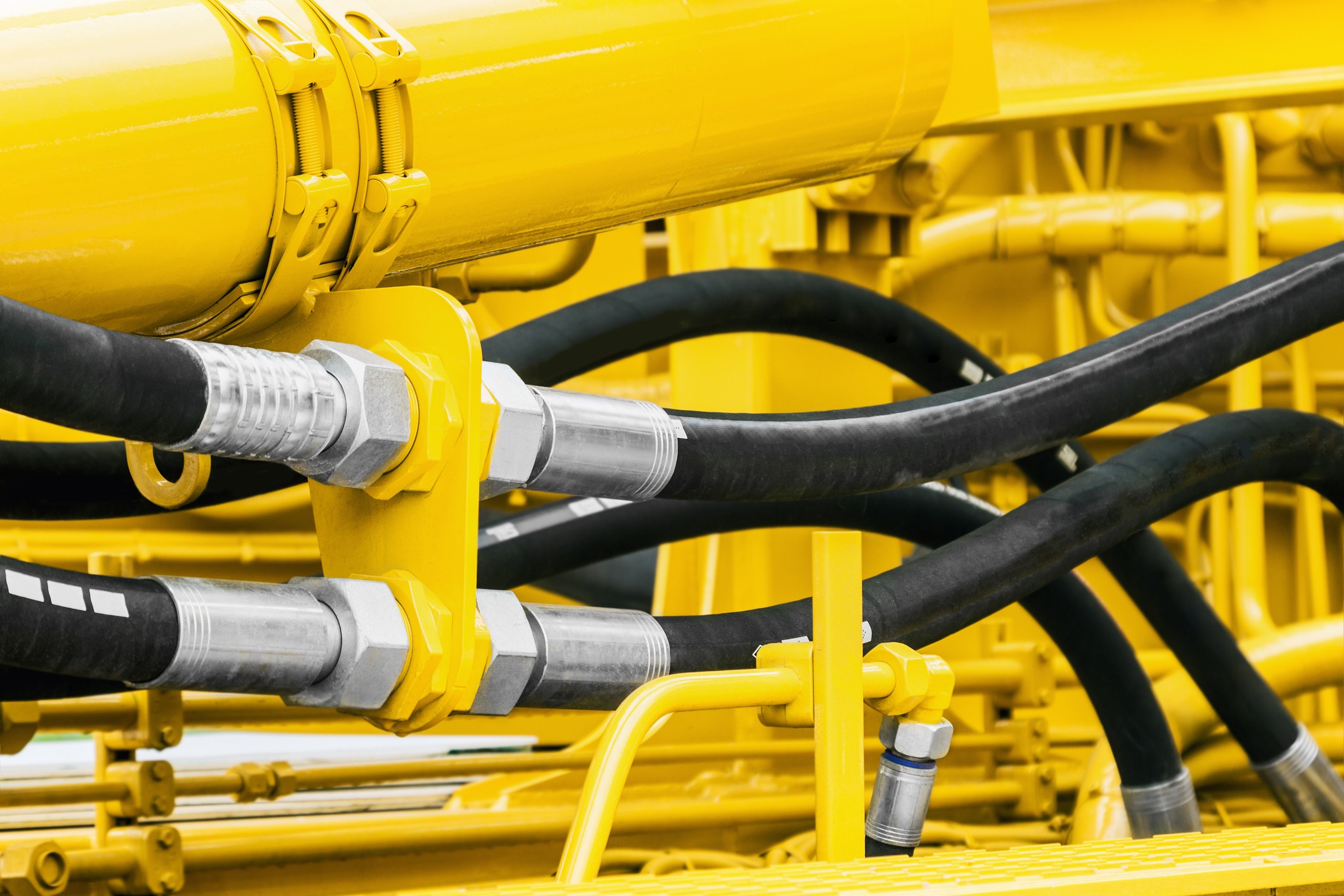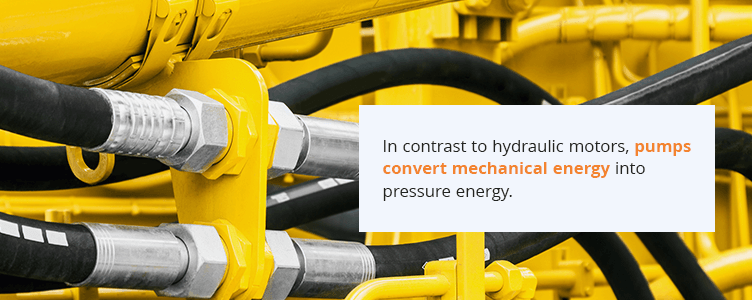Hydraulic Pump vs. Hydraulic Motor

As essential components of heavy-duty equipment, hydraulic pumps and hydraulic motors have some broad similarities and can sometimes be difficult to distinguish. Whether you’re looking for solutions for your company’s equipment or you want to learn more about the industry, you’ll need to understand some key characteristics to differentiate hydraulic motors and pumps.
Read on to learn about the differences between these two components and their applications.
Hydraulic Motors
Hydraulic motors have a simple structure and operate as mechanical actuators. They convert pressure into mechanical energy, causing the pressure oil to drive the motor blades into rotation. This rotating drive connects with the hydraulic motor shaft to make it operate. In turn, the motor connects to the load with gears and pulleys to bear a higher radial load.
Available with high- or low-speed motor options, these units are ideal for uses such as metalworking machinery applications, conveyors and rolling mills, among many other purposes. This equipment has a significantly broader speed range than a pump.
Some critical types of hydraulic motors include:
- Axial plunger motor: This motor model is a high-pressure system with optimized low-speed stability and high-volume efficiency.
- Geared hydraulic motor: With a simple structural design, these motors are ideal for applications with requirements for low motion stability and higher speeds, such as fans or driving grinders.
- Vane hydraulic motor: Ideal for frequent commutation and starting, this motor type offers sensitive action and low volumetric efficiency.

Hydraulic Pumps
In contrast to hydraulic motors, pumps convert mechanical energy into pressure energy. Transforming the power from motor rotation or other mechanical sources sends pressure oil throughout the pump system to facilitate operations. Also, most hydraulic pumps are built with a vacuum in the low-pressure chamber to absorb oil efficiently.
Typically, this equipment is used in hydraulic drive systems. They are integrally self-priming, and the pump is connected directly to the primary mover, so the pump shaft has no additional radial load.
The primary classifications of hydraulic pumps are:
- Vane hydraulic pump: This unit can withstand mid-range pressure and offer high efficiency during continuous operation. With capabilities for uniform flow and stable operations, this solution may be a double-acting or single-acting vane pump, and typical applications include engineering machinery and lifting transport vehicles.
- Gear hydraulic pump: Gear pumps are smaller and have lower oil cleaning requirements, so they can be used for engineering machinery, mining equipment, agricultural and forestry tools, and metallurgical machinery.
- Plunger hydraulic pump: Applications for this unit type include high-pressure fuel delivery in diesel engines. The plunger pump has a complex structure, high volumetric efficiency and a high-pressure operating capacity.
Contact Global Electronic Services About Hydraulic Repair
Depending on your company’s functional needs, you may need to implement a hydraulic pump or a hydraulic motor. Keep in mind that the main difference between the two options is whether they convert energy to pressure or pressure to mechanical energy.
If your company needs hydraulic equipment repairs, Global Electronic Services offers prompt service that minimizes downtime and helps you get the best performance from your systems.
To learn more about our offerings, contact us today to request a quote.
